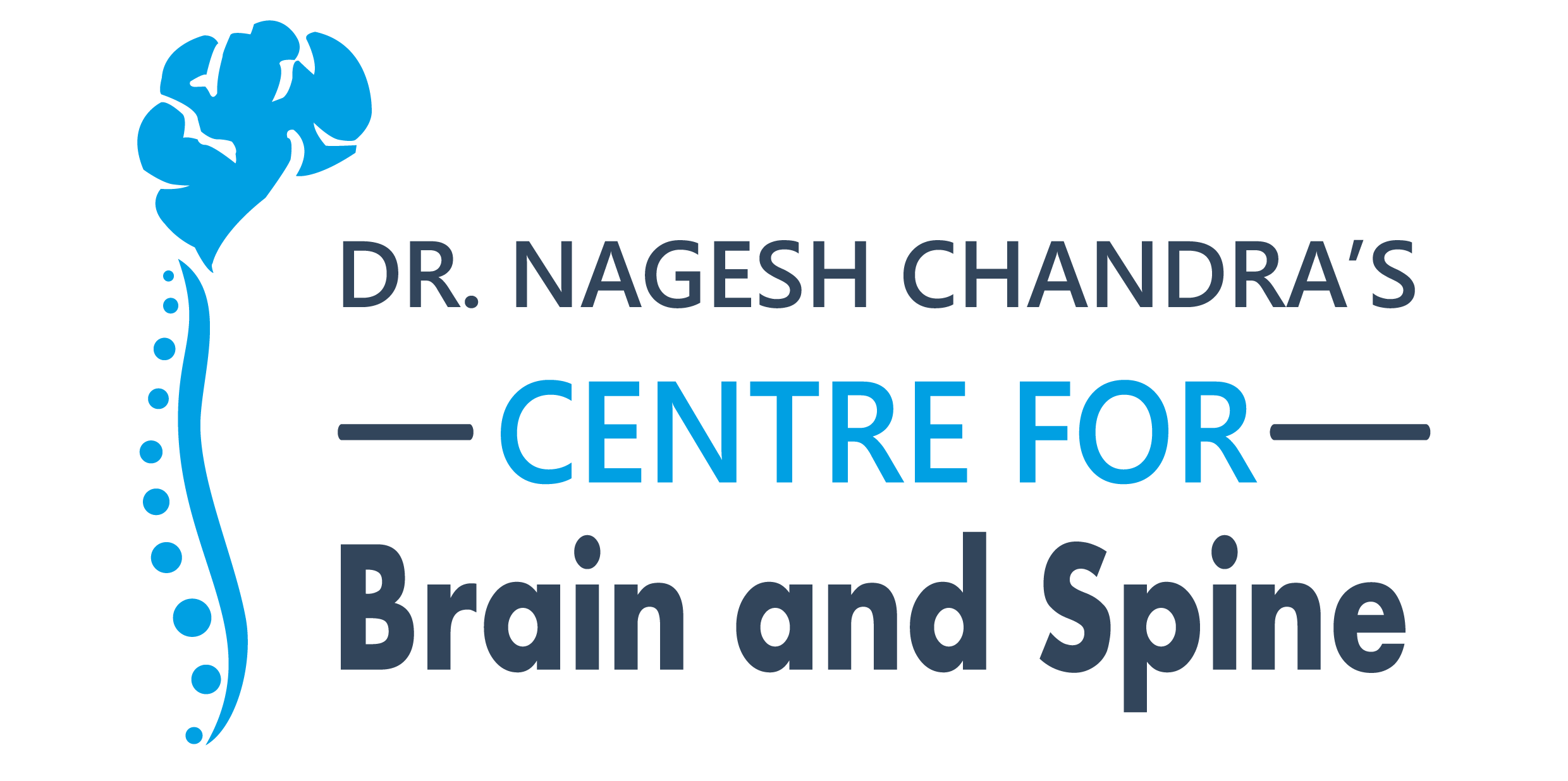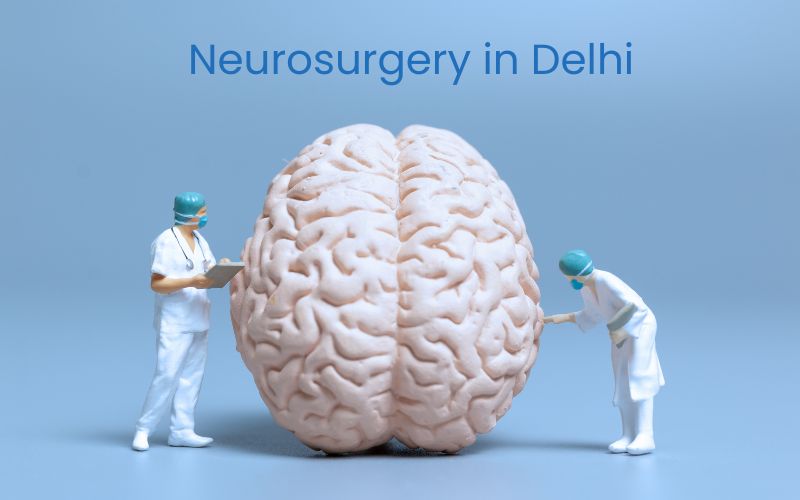Neurosurgery, or neurological surgery, is a medical speciality that determine and treat diseases that have to do with the brain and other parts of the nervous system (e.g., the spinal cord and peripheral nerves).
Brains, spines, kidneys, and nerves are just some of the organs that neurosurgeons operate on as they surgically treat patients of all ages. From congenital abnormalities in newborns up to stroke in old age, neurosurgeons address several conditions. Some examples of these include nerve injuries, neuroblastoma, infections and neurodegenerative diseases.
The diagnosis is mainly done through imaging study, and observable evidence like CT scans, MRI scans, and angiograms. All Neurosurgeon in Delhi works in close collaboration with neurologists so that patients with neurological problems can benefit from proficient care.
What is Neurosurgery?
Neurosurgery in Delhi, a relatively new discipline of surgery, gained recognition in the first 1900s. Now it is a breakthrough and a leading branch of medical science. Neurosurgeons employing advanced technologies tackle a wide range of neurological abnormalities.
Neurosurgeons can specialise in various subspecialties within this branch such as neurovascular surgery, neuro-oncology, paediatric neurosurgery, interventional neuroradiology, spine surgery, pain management, and nerve trauma etc. Every subspecialty deals with the specific aspects of neurological care that help provide treatment for patients with various needs.
Types Of Neurosurgery in Delhi
Listed below are the most common types of Neurosurgery in Delhi:
Craniotomy Neurosurgery in Delhi
A craniotomy requires a surgeon to remove a certain portion of the skull to access the brain. Specially designed tools are used to carry out the bone removal procedure, and a bone flap is just temporarily taken out during the operation to be placed back in the right position afterwards. Highly developed techniques such as computer imaging, MRI or CT scans could be utilised during the procedure.
Craniotomies are carried out for different purposes including stoppage of an aneurysm, inspecting or treating brain tumours, repair of skull fractures, reduction of intracranial pressure, or treatment of epilepsy. Every craniotomy is individually modulated to a particular patient’s condition and demands. Although the process is complex, craniotomy is an important neurosurgical procedure that can provide some sort of respite and better outcomes for patients with brain issues.
Stereotactic radiosurgery
Stereotactic radiosurgery is a specialised procedure that stops tumour growth by altering its molecular structure and preventing multiplication. This method is used to deliver a highly concentrated dose of radiation to small tumours. But this technique is not useful for large tumours as it can damage surrounding normal tissues.
Stereotactic radiosurgery can be used in different situations, including acoustic neuroma, trigeminal neuralgia, arteriovenous malformation, and meningioma. Any of these conditions may be treated through this technique because of its precision and targeted treatment.
Acoustic neuroma, a noncancerous tumour of the nerve linking the ear to the brain, can also be tackled with this method. Stereotactic radiosurgery can also treat trigeminal neuralgia, which is associated with severe facial pain, and arteriovenous malformation, which is caused by an abnormal tangle of blood vessels in the brain.
Meningiomas, tumours derived from the membranes that encircle the brain and the spinal cord also show good response to this technique. Through precise delivery of stereotactic radiosurgery patients now have an alternative to invasive traditional surgery.
Neuroendoscopy
Neuroendoscopy is a unique and technically advanced technique that is being utilised by the best Neurosurgeon in Delhi. It is beneficial as it induces little damage to the neighbouring tissues compared to many other methods. Through the help of endoscopes and high-definition cameras, neuroendoscopy provides an efficient treatment for inaccessible brain or skull base tumours.
This approach is a special way to treat various conditions such as intraventricular tumours, intracranial cysts, degenerative spine disease, and skull base tumours. Through exact interventions, and targeted in nature, neuroendoscopy improves post-operative outcomes without the occurrence of post-operative complications.
Ventricular shunt
In a ventricular shunt procedure, excessive cerebrospinal fluid (CSF) from the brain is drained. This is the actual insertion of a Ventriculoperitoneal (VP) shunt directly into the head, which redirects the fluid to the abdomen where it is then absorbed. This way the pressure and swelling within the brain are reduced and the symptoms of conditions like hydrocephalus are alleviated.
Hydrocephalus causes cerebrospinal fluid buildup within the brain. It frequently necessitates surgical intervention to control symptoms and prevent problems. Ventricular shunting is one of the most used treatment methods with a very good reputation for its ability to restore proper CSF circulation and the alleviation of the pressure on the sensitive brain tissues.
When the shunt is inserted, the neurosurgeon meticulously places the shunt system in the position to drain the excess fluid. It promotes optimal brain functioning with minimal risk of neurological damage. Regular checks and follow-up care are important to ensure the shunt is working properly.
Peripheral Nerve Surgery
Peripheral nerve surgery includes the treatment of the nerves which are outside the central nervous system, e.g., those in the limbs. Through this process, the goal is to minimise pain, restore function and alleviate disability related to peripheral nerve disorders. A surgeon can redirect healthy nerves to recreate parts that are damaged due to disease or injury.
The surgery aims to correct a variety of problems like brachial plexus injury, trauma of nerves, carpal tunnel syndrome, neurofibroma, and ulnar nerve neuropathy. By conducting peripheral nerves, surgeons can reestablish movement and feeling. Thus, improving the general status of the patient. Successful results depend on correct diagnosis, precise surgical operations, and thorough post-operative treatment.
Endoscopic Endonasal Surgery
Endoscopic endonasal surgery is a minimally invasive method for brain surgery. Using this method, a flexible thin tube attached to a light and camera, called an endoscope. It is inserted through the nose and sinuses.
This provides the surgeon access to areas of the brain like the base of the skull or the top of the spine, which are challenging to reach with traditional surgical methods that involve incisions.
The endoscope makes these areas bright to insert special tools through the nose and pull out the tumours or lesions. This approach has some benefits like less risk of complications, shorter recovery times, and better results after undergoing a brain surgery.
Awake Brain Surgery
Intraoperative brain mapping is where patients are conscious but heavily sedated. It is usually used in neurosurgery. This approach is especially convenient when it comes to working close to brain parts of critical function, like those related to vision, language, memory, and movement.
Neurosurgeons in this method use cortical mapping techniques. They stimulate these areas using small electrodes. Through observing the following signs like limb twitching or tingling sensations, the surgeons indicate the brain areas that are functional.
Navigation technology allows surgeons to operate on brain pieces with minimal functional loss. Awake brain surgery symbolises neurosurgery’s evolution and showcases that the surgical field is becoming safer and more effective.
Biopsy
A biopsy is a procedure involving the surgical removal of a small sample of brain tissue for microscopic examination. This sample enables the detection of the structural or functional irregularities that aid in diagnosis and prediction.
Generally done under general anaesthesia, a neurosurgeon bores a little hole in the skull and inserts a thin needle to collect the tissue. Biopsies are the primary indicator of the type and degree of neurological conditions, which in turn are used to develop treatment plans and patient care.
Neurosurgery Cost in India
In India, the cost of normal neurosurgery ranges from Rs. 3,20,000 to Rs. 5,80,000. The country runs its medical facilities through highly experienced and trained surgeons who carry out neurosurgery procedures in several hospitals. The actual expense may be determined by the type of surgery needed.
Delhi and other states of India provide neurosurgeries in specialised hospitals which have the latest technology and skilled neurosurgeons. Neurosurgery in Delhi is also famous for its affordability and no waiting lists for patients.
The top Neurosurgeon in Delhi are proficient in brain and spinal cord surgeries as well. Also, the cost of a craniotomy is affordable, at only 6,000 USD in India, which is far less than the 40,000 USD price charged in the USA.
Neurosurgery is an umbrella term for treatments covering disorders of the nervous system, for example, brain surgery, spinal surgery, and nerve repair. A Neurosurgeon in Delhi contributes to the development of life-changing medical innovations to address congenital abnormalities, strokes or care management for all age groups.
If you are experiencing neurological complications consult a qualified neurosurgeon to get help. At the Center for Brain and Spine in Dwarka, Delhi, you can consult for your issues with Dr. Nagesh Chandra, a top neurosurgeon in Dwarka known for providing the neurosurgery and treatment. He has in-depth experience and modern techniques to offer a full-scale care plan for your specific needs. Feel free to seek expert help and regain control of your neurological health.

